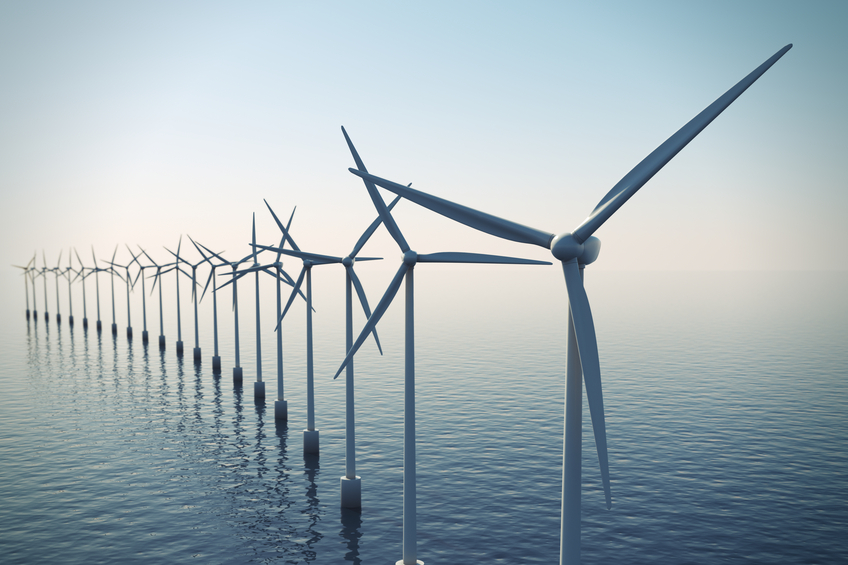New Brunswick Alt/Ren Energy 30 PDH Discount Package
Courses in this Package
Biodiesel Handing and Use Guide (R04-008)
Design and Sizing of Solar Photovoltaic Systems (R08-002)
Advantages of Electricity Storage to the Electric Grid (R02-013)
Future Energy Sources (M03-047)
Advancing Clean Electric Power Technologies: Solar Power (R02-016)
Novel Technologies for Bulk Energy Storage (R05-001)
Re-Powering Critical Infrastructure (R02-017)
Wind Turbine Technology (R04-009)

This online engineering PDH course provides an overview of biodiesel blends, the advantages of using biodiesel, precautions for use of biodiesel during cold weather, and the proper procedures for handling and use of biodiesel. This course also provides detailed information on biodiesel testing requirements and compatibility issues.
Biodiesel is a diesel replacement fuel for use in diesel engines. It is manufactured from plant oils, animal fats, and recycled cooking oils, is most commonly used as a blend with petroleum diesel in compression-ignition engines. Some of the advantages of Biodiesel are that it is renewable, can reduce greenhouse gases, compatible with new technology diesel engines, nontoxic, biodegradable, and suitable for sensitive environments.
This 4 PDH online course is intended primarily for energy, chemical, environmental, mechanical, civil and industrial engineers. Someone completing this course will gain knowledge about the use and handling of biodiesel.
This P.Eng. continuing education course is intended to provide you with the following specific knowledge and skills:
- Understanding the sources and processing of biodiesel
- Learning about the benefits and attributes of biodiesel
- Familiarizing with Physical properties of biodiesel as compared to No. 2 diesel
- Understanding the ASTM D6751 standards for biodiesel quality
- Learning about the material compatibility issues for biodiesel
- Learning about the cold-weather issues for biodiesel
- Understanding how to properly blend, store, and transport biodiesel
- Learning about the engine and equipment warranties involved with biodiesel use
- Learning about the taxes and incentives for biodiesel
- Familiarizing with basic safety, health, and environmental issues for biodiesel
- Understanding the fire safety and firefighting considerations
Upon successful completion of the quiz, print your Certificate of Completion instantly. (Note: if you are paying by check or money order, you will be able to print it after we receive your payment.) For your convenience, we will also email it to you. Please note that you can log in to your account at any time to access and print your Certificate of Completion.

This online engineering PDH course presents the fundamental principles behind the workings of a solar PV system, use of different components in a system, methodology of sizing these components and how these can be applied to building integrated systems. It includes detailed technical information and basic step-by-step methodology for design and sizing of off-grid solar PV systems.
The sun delivers its energy in two main forms: heat and light. There are two main types of solar power systems, namely, solar thermal systems that trap heat to warm up water and solar PV systems that convert sunlight directly into electricity (the latter being the focus of this course). Direct or diffuse light (usually sunlight) shining on the solar cells induces the photovoltaic effect, generating DC electric power. This DC power can be used, stored in a battery system, or fed into an inverter that converts DC into alternating current “AC”, so that it can feed into one of the building’s AC distribution boards (“ACDB”) without affecting the quality of power supply.
Several factors and aspects are taken into consideration when designing a solar PV system which will be discussed in this course.
This 8 PDH online course is applicable to electrical & mechanical engineers, energy & environment professionals, architects & structural engineers, and other professionals looking to enter the solar industry, or interact with solar projects in their current line of work.
This P.Eng. continuing education course is intended to provide you with the following specific knowledge and skills:
- Learning about the basics of PV technology
- Familiarizing with performance aspects of PV modules
- Gaining an overview of the different types of PV system configurations
- Learning about the role of inverters in PV systems
- Familiarizing with charge controllers
- Learning about the different types of batteries, their associated classifications, and key definitions
- Understanding the importance of having balanced systems
- Designing and sizing of PV systems
- Familiarizing with building integrated PV systems
Upon successful completion of the quiz, print your Certificate of Completion instantly. (Note: if you are paying by check or money order, you will be able to print it after we receive your payment.) For your convenience, we will also email it to you. Please note that you can log in to your account at any time to access and print your Certificate of Completion.

This online engineering PDH course discusses advantages to the electric grid that are gained through using electricity storage systems to supplement electrical generation systems. It presents a total of fourteen such advantages provided by an electricity storage capability, including ancillary services, grid system services and functional uses, end user/utility customer functional services, and renewables integration.
One example of an advantage is time-shifting, the purchase of electric energy when prices are low, and then storing it and using or selling the energy later when prices are high. Another example, possible only under certain grid conditions, is using energy storage to reduce the need to buy new central station generating capacity. A third example is using energy storage for grid regulation, that is, the damping of momentary differences caused by fluctuations in generation and loads. In general, the rapid-response characteristic (i.e., fast ramp rate) of most storage systems makes them especially valuable as a regulation resource.
This 2 PDH online course is intended for electric systems engineers/planners, storage system vendors, and regulators concerned with the design and implementation of stationary energy storage systems.
This P.Eng. continuing education course is intended to provide you with the following specific knowledge and skills:
- Learning about bulk energy services
- Learning about ancillary services such as regulation, spinning and non-spinning reserves, and voltage support
- Learning about transmission upgrade deferral and congestion relief
- Learning about distribution infrastructure services
- Learning about power quality, reliability, and retail energy time-shift
- Learning about stacked services
In this professional engineering CEU course, you need to review the course document titled, “Advantages of Electricity Storage to the Electric Grid” which is based on Chapter 1, “Electricity Storage Services and Benefits” of the “DOE/EPRI Electricity Storage Handbook in Collaboration with NRECA,” February 2015.
Once you complete your course review, you need to take a multiple-choice quiz consisting of fifteen (15) questions to earn 2 PDH credits. The quiz will be based on this publication.
Upon successful completion of the quiz, print your Certificate of Completion instantly. (Note: if you are paying by check or money order, you will be able to print it after we receive your payment.) For your convenience, we will also email it to you. Please note that you can log in to your account at any time to access and print your Certificate of Completion.

This online engineering PDH course describes the state-of-the art, cutting edge efforts by scientists and engineers in the United States who are involved with research to continue to find alternate energy sources for the future. These energy sources will be of vital importance to sustaining and improving the quality of life on planet earth and beyond. This course explains how the U.S. Department of Energy (DOE) leads the world in the conception, design, construction, and operation of these large-scale devices. It also discusses that these machines have enabled U.S. researchers to make some of history's important scientific discoveries, with spin-off technological advances leading to entirely new industries.
Throughout its history, the Department of Energy's Office of Science has designed, constructed, and operated many of the Nation's most advanced, large-scale research and development user facilities, of importance to all areas of science. These state-of-the-art facilities are shared with the science community worldwide and contain technologies and instrumentation that are available nowhere else. As the steward of America's national laboratories, the Department of Energy has a special responsibility to plan for and propose Office of Science investments for the future that will serve to advance the national, energy, and economic security of the United States.
This 3 PDH online course is intended for engineers who are interested in current and future state-of-the art energy sources that will provide good stewardship of America's limited energy sources.
This P.Eng. continuing education course is intended to provide you with the following specific knowledge and skills:
- Energy Sciences Network (ESnet)
- National Energy Research Scientific Computing (NERSC) Center
- National Synchrotron Light Source (NSLS)
- Advanced Light Source (ALS)
- Advanced Photon Source (APS)
- High Flux Isotope Reactor (HFIR) Center for Neutron Scattering
Upon successful completion of the quiz, print your Certificate of Completion instantly. (Note: if you are paying by check or money order, you will be able to print it after we receive your payment.) For your convenience, we will also email it to you. Please note that you can log in to your account at any time to access and print your Certificate of Completion.

This online PDH course briefly discusses the solar market and solar energy’s technical and resource potential. Also, it addresses R&D strategy and priorities, the development and status of solar technologies and markets, projected solar deployment and impacts, and solutions for high-penetration of renewable energy into the electricity grid.
Solar energy offers a number of strategic benefits to the United States. Replacing fossil-fuel combustion with solar energy reduces emissions of human-induced greenhouse gases and air pollutants.
Despite these benefits, solar energy currently supplies only a small fraction of U.S. energy needs, largely because it historically has cost more than conventional energy sources. However, solar manufacturing costs and sales prices have dropped dramatically over the past few decades, and solar technologies are approaching energy-price parity with conventional generating sources in some regions of the United States and abroad.
This 2 PDH online course is intended for mechanical, electrical and renewable energy engineers as well as others interested in learning more about the current solar market and solar energy’s technical and resource potential.
This P.Eng. continuing education course is intended to provide you with the following specific knowledge and skills:
- Familiarization with the solar market and solar energy’s technical and resource potential
- Familiarizing with R&D strategy and priorities
- Understanding the development and status of solar technologies and markets
- Understanding the nature of projected solar deployment and their impact on the U.S. electricity markets
Upon successful completion of the quiz, print your Certificate of Completion instantly. (Note: if you are paying by check or money order, you will be able to print it after we receive your payment.) For your convenience, we will also email it to you. Please note that you can log in to your account at any time to access and print your Certificate of Completion.

This online engineering PDH course provides a brief description of conventional compressed air energy storage (CAES) and pumped storage hydropower (PSH) technologies including their current status as well as an overview of the general limitations of each technology. It also introduces eight new PSH and nine new CAES technologies. The “newness” of the technologies ranges from technologies that are new to the United States (but present in a foreign country) to technologies that are futuristic (in very early stages of development). The business characteristics, electric grid characteristics, suitable applications, and feasibility of each of the novel technologies are described. Finally, it identifies the technological gaps and barriers to commercialization, outlines future research and development needs, and recommends a focus for future efforts.
If renewable energy resources are to reduce our reliance on fossil-fuel power-plants for generating electricity, some means of storing large amounts of energy must be developed to generate electricity during times when the renewable energy resources are not available, for example, when the sun does not shine or the wind does not blow. Two common types of bulk energy storage are compressed air energy storage (CAES) and pumped storage hydropower (PSH).
This 5 PDH online course is intended for electrical, mechanical, and civil engineers concerned about the development and feasibility of increasing the use of renewable energy resources for electricity generation.
This P.Eng. continuing education course is intended to provide you with the following specific knowledge and skills:
- Understanding the status and limitations of conventional PSH technology
- Understanding the status and limitations of conventional CAES technology
- Learning about permitting issues related to bulk storage systems
- Learning about the methodology for choosing bulk energy storage applications
- Knowing the applications recommended for bulk storage
- Learning about the eight novel PSH technologies
- Learning about the nine novel CAES technologies
- Knowing the PSH gaps, barriers and R&D needed
- Knowing the CAES gaps, barriers, and R&D needed
In this professional engineering CEU course, you need to review the course document titled, “Novel Technologies for Bulk Energy Storage” which is based on the Sandia Report, SAND2011-3700, "Characterization and Assessment of Novel Bulk Storage Technologies” by Poonum Agrawal, et al., May, 2011.
Upon successful completion of the quiz, print your Certificate of Completion instantly. (Note: if you are paying by check or money order, you will be able to print it after we receive your payment.) For your convenience, we will also email it to you. Please note that you can log in to your account at any time to access and print your Certificate of Completion.

This online engineering PDH course presents a methodology to identify suitable sites for the establishment of renewable energy (RE) facilities intended to support critical infrastructure in an emergency.
"RE-Powering Critical Infrastructure" presents a methodology for identifying sites—typically formerly contaminated lands, closed landfills, and mine sites—close to critical infrastructure. If a renewable energy facility were to be installed at the site, then in the event of a natural disaster disrupting the national electrical grid, the RE at the site could provide emergency back-up for the critical infrastructure. The course applies this methodology to critical infrastructure including wastewater treatement plants, drinking water treatment plants, hospitals, schools, emergency centers, cell towers, fire stations, and natural gas distribution centers.
This 2 PDH online course is applicable to civil, environmental, electrical and other engineers, concerned with renewable energy applications.
This P.Eng. continuing education course is intended to provide you with the following specific knowledge and skills:
- Familiarizing with vulnerability screening to identify RE-Powering sites located in areas that are likely to experience power outages
- Knowing how to apply proximity screening to identify RE-Powering sites near a critical wastewater treatment plant
- Learning about economic screening to identify RE-Powering sites that are economically suited for siting renewable energy
- Learning how to apply needs screening to identify RE-Powering sites most likely to meet the needs of the facility being supported
- Gaining an overview of the screening methodology of critical infrastructures other than wastewater treatment plants (WWTPs)
Upon successful completion of the quiz, print your Certificate of Completion instantly. (Note: if you are paying by check or money order, you will be able to print it after we receive your payment.) For your convenience, we will also email it to you. Please note that you can log in to your account at any time to access and print your Certificate of Completion.

This online engineering PDH course provides a brief overview of wind turbine technology and its associated components, discusses the financial considerations and the technological improvements that would be required to increase the reliance on wind energy in the future.
Current turbine technology has enabled wind energy to become a viable power source in today’s energy market. Advancements in turbine technology that have the potential to increase wind energy’s presence are currently being explored through areas of study including reducing capital costs, increasing capacity factors, and mitigating risk through enhanced system reliability.
This 4 PDH online course is intended for renewable, sustainability, mechanical, electrical, and industrial engineers, as well as other technical personnel who are interested in gaining a basic understanding of wind turbine technology.
This P.Eng. continuing education course is intended to provide you with the following specific knowledge and skills:
- Familiarizing with the basic configuration of the modern wind turbine
- Knowing the options in improving wind turbine technology
- Understanding the technical and financial risks involved in wind technology
- Familiarizing with offshore wind technology
- Learning about distributed wind technology (DWT) and their applications
Upon successful completion of the quiz, print your Certificate of Completion instantly. (Note: if you are paying by check or money order, you will be able to print it after we receive your payment.) For your convenience, we will also email it to you. Please note that you can log in to your account at any time to access and print your Certificate of Completion.